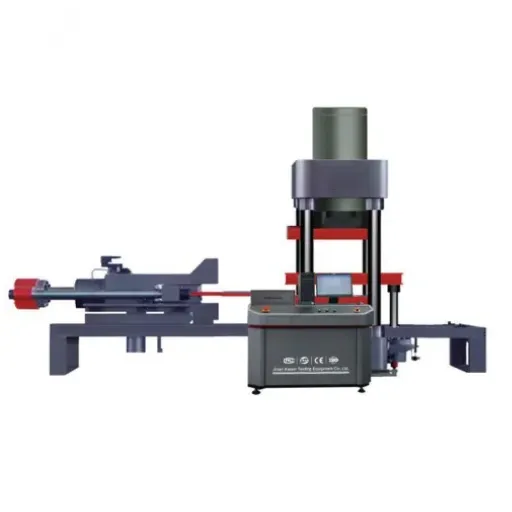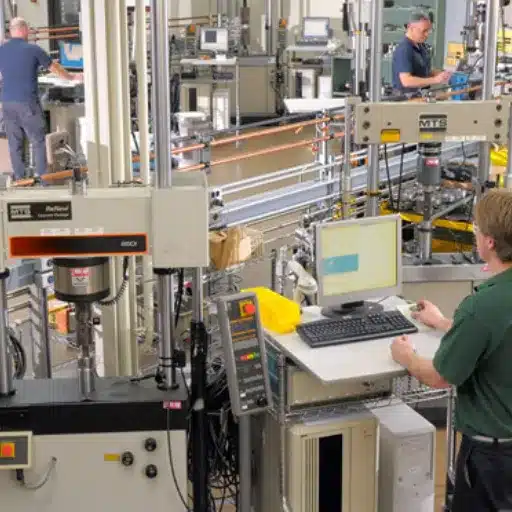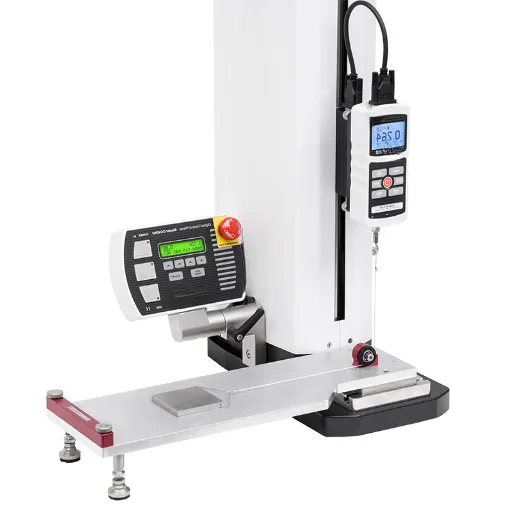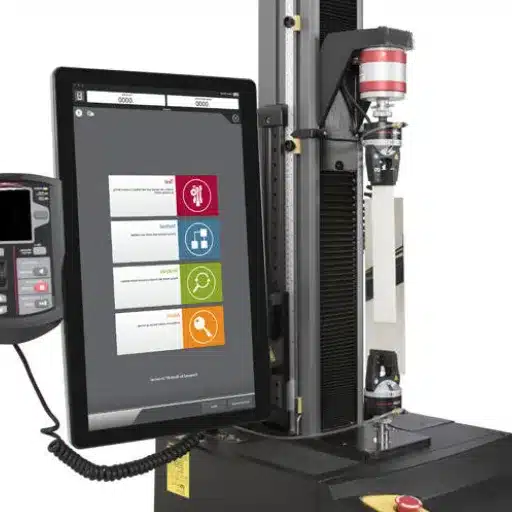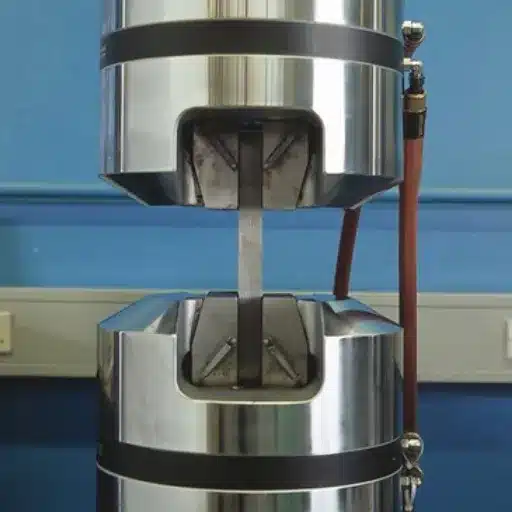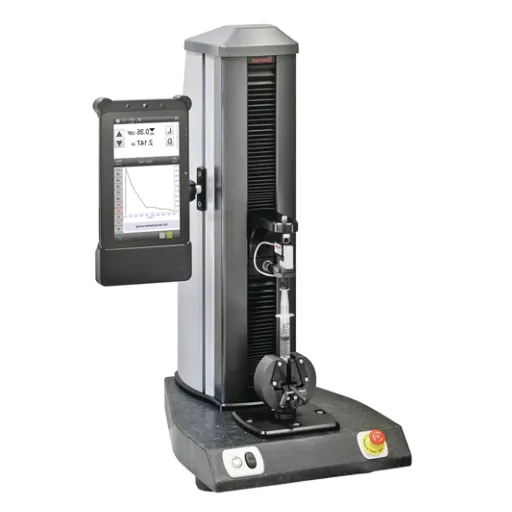In assessing strength and durability, the flexural test is very important. It is essentially a mechanical test that measures resistance of materials to bending forces and so this method finds wide applicability in industries like construction, manufacturing, and aerospace. So what actually constitutes a flexural test, and why is its application crucial for the performance and safety assurance of practically any structure or product? With that in mind, let us take a closer look at the basics of flexural testing, its practical applications, and the glance it offers into the behavior of materials under stress. If you are a material scientist, an engineer, or one curious about how reliability is tested for everyday objects, the article will give you a quick and easy insight into the world of bend testing. Let’s dive into the science and see why it matters to us!
Introduction to Flexural Testing
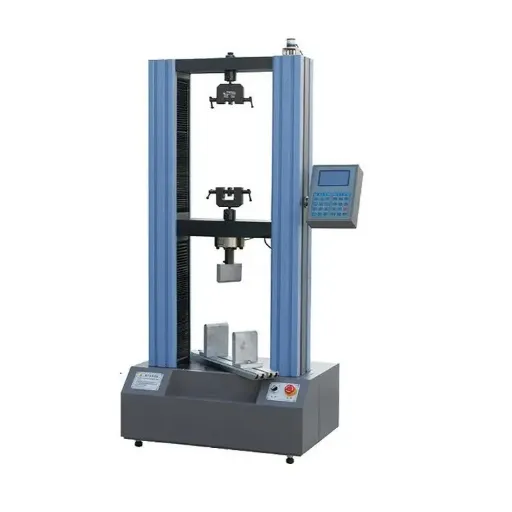
Definition of Flexural Test
A few flexural test is also called a flexural test, wherein the behavior of materials under the application of bending forces is found. The test measures the critical properties like flexural strength, flexural modulus, and the material’s resistance to deform upon the application of load. Flexural strength is the utmost stress flexed upon into and caused to fail in bending in a material.
The test is carried out by placing the specimen, which is generally a rectangular/cylindrical beam, on two supports and then applying the force either at the center of the specimen or at two points over the specimen. Thus, bending tests such as three-point bending and four-point bending are employed. The data thus obtained is used by engineers and scientists to see the ability of a given material to work under conditions similar to practice where bending stresses are common, such as beams, panels, etc., and other structural applications.
Flexural testing is a universal method applied in the construction, automotive, and aerospace worlds to evaluate materials for reliability and durability. The test assures safety and performance in various applications by telling how the material behaves in tension and compression while being bent, and it is ideal for the brittle materials like ceramics, polymer, and composites that stand a high chance of cracking under stress.
Importance of Flexural Strength
Flexural strength is really important in judging the structural integrity and performance of materials under load. It measures the ability of a material to resist deformation when a force is exerted on it in bending, thus providing real application insight. Materials with greater flexural strength reduce risk and increase safety in bridges, buildings, aircraft components, and automotive parts among which structural failure can lead to significant hazards.
Also, knowledge of flexural strength helps with material selection for applications. Brittle materials like ceramics and composites are chosen for their strength in certain conditions. They are alternatives to polymers in that they might be favored for their flexibility. Knowing the limits of bending capacity of materials helps engineers and manufacturers design mechanisms that will work within these limits to minimize risks and optimize durability.
About new materials or current materials’ performance under various stresses, flexural testing aids in innovation and quality assurance by revealing faults and weaknesses that can be addressed in an improvement program before safety standards can be enforced. This makes flexural strength a chief property in the establishment and realization of reliable and high-performance materials.
Applications in Various Industries
The flexural test has myriad applications across various industries, ensuring that materials meet the required standards of performance and durability. In construction, one chief use of a flexural test is for concrete and reinforced plastic materials, with the aim of testing for bending forces. This is pertinent to the structural integrity of buildings, bridges, and other substantially important infrastructures.
Maintaining flexural tests to ensure safety and efficiency in the automotive sector is a must. Car chassis, aircraft wings, and other load-bearing units are sine qua non in testing for resistance to the actual stressing conditions. Once weak points are identified, manufacturers can then improve materials and designs to meet safety and performance requirements.
Consumer goods and medical equipment manufacturers must have flexural tests conducted on their products to make sure that they can sustain ordinary use or special conditions. From furniture and sporting equipment to medical implants, this test is a key one in ensuring the manufacturing of secure and dependable products. Flexural strength testing, then, is a scientific instrument but also a process to guarantee the quality and durability of materials in several industries.
Types of Flexural Tests
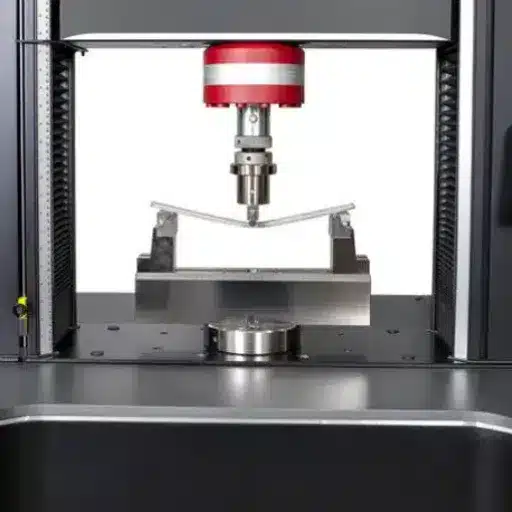
Three-Point Flexural Test
Three-point flexural testing is a generally used method to measure the flexural strength and stiffness of a material. It comprises giving a material, usually a bar-shaped specimen, two-point supports and applying the load at the center point. This load may be gradually increased, thereby causing the specimen to undergo bending until the specimen fractures. The test findings provide information such as the maximum amount of stress and strain that a material can handle before failure; hence, it is an important test in assessing material performance.
This is especially appreciated because of its simplicity and reliability. Using three contact points alone, i.e., two supports and the loading point, the mechanical properties of materials can be simply evaluated, including the elastic modulus and flexural strength. It is employed mainly for testing plastics, composites, metals, and ceramics, with sample sizes and loading configurations adjusted as per accepted industry standards for each material.
One of the few benefits of a three-point flexural test is their capability to represent bending loads of natural conditions on materials. From this test, generous data help in making durable product designs over many industries like building, automotive, aerospace, and home goods. Knowing how a substance behaves under flexural stress greatly contributes to safety and performance in real applications.
Four-Point Flexural Test
This method is also one of the widely utilized processes for the evaluation of a material’s flexural strength and its behavior under stress. In contrast to the three-point test method, two loading points are applied in this method, thus subjecting the specimen to an evenly distributed bending moment between these points. This arrangement removes the shear forces in the central region, thus allowing for a more accurate determination of the bending strength and modulus of the material under test.
Because the four-point test places the load on a large portion of the specimen, different information can be gathered about a material’s behavior under conditions close to service loading. Materials that exhibit variations in properties along their length or those that may fail due to an isolated point of weakness benefited substantially from tests done on extended lengths. The test is therefore very useful for the aerospace and civil engineering communities where accurate predictions of material behavior are of paramount importance for safety and utilization.
In brief, the four-point flexural test is a very reliable and very accurate means of determining the mechanical properties of a wide range of materials. It is complementary to the three-point test, overcoming some of its limitations and providing insight into material behavior. For engineers, designers, and researchers, the knowledge and subsequent application of the results from this test are essential for improving the durability of products and ensuring the structural integrity of various applications.
Comparison of Flexural Test Types
Flexural tests are important in determining mechanical material properties under bending stresses. Two of the most common methods available are three-point bending and four-point bending, each with certain advantages and applications. Understanding how each technique is applied to a material provides supporting evidence for deciding on the material and analysis of the structure.
In three-point bending, the force acts at one point in the middle of the span, with the test piece supported at two end points. The test is rather straightforward to carry out and requires less equipment and so it is cheap and commonly done. However, since the load is focused at a single point, the accuracy of the stress distribution can be compromised, thus making it somewhat improper for studying material behavior under uniformly distributed loads.
In contrast, the forces act at two points in four-point bending, thus creating a large central region where the bending moment remains constant. The four-point bending test avoids stress concentration problems arising from single-point application, so stress is uniform along a certain distance. This test has relevance for specimens that are either too large or prone to fracture or when a deeper understanding of materials arises. The setup is far more intricate, yet the results are far more accurate and highly adaptable to allow more advanced applications.
Conducting a Flexural Test
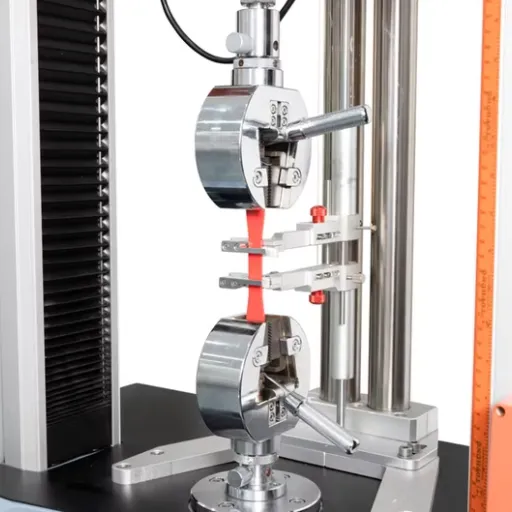
Equipment and Test Setup
For a flexual test to be correctly conducted and to yield reliable data, specific equipment is needed. The testing machine has to be capable of applying load in a controlled manner, and the specimen has to be held in place by supports. The load-inducing apparatus- either a loading nose or rollers- has to act at well-defined points. The precise alignment and calibration of these components are vital for maintaining uniform stress and a resultant error in testing.
The specimen sits on two bottom supports, with the span length between these supports recorded. The load is then applied at the center point of the specimen for a three-point bending test or at two points equally spaced from the center for a four-point bending test. Proper alignment of the specimen as well as the loading mechanism is important because any unintended stress imbalance introduced by misalignment may affect results.
As the test proceeds, the machine applies force by gradually increasing it at a controlled rate, while sensors record the parameters of load, displacement, or stress. This recorded data is usually analyzed to reveal the material’s flexural strength, modulus of elasticity, or fracture behavior. To ensure the validity and repeatability of results, proper documentation and strict adherence to the protocol are paramount.
Step-by-Step Procedure to Perform a Flexural Test
- Preparation of the Specimen: The test sample should first be prepared as per the standards stipulated for the material under test. It must be clean, devoid of defects, and judged with the aid of, or figured to, the proper dimensions. Preparation in a proper way will ensure correctly arriving at test results.
- Setting Up the Testing Machine: Calibrate the flexural test machine so as to have it measure correctly. Place the specimen on the upper support fixture of the machine with slight alignment with the setup. Adjust the span exactly as per the testing standard such that the setup fits in with the requirements specified for the material or stuady.
- Performing the Test: Start the test and apply the load at the rate specified in the standards. Observe to ensure that the distribution of the load is steady through the specimen. The machine then records all tests parameters-measurements of load, and deflection till the point of fracture, or significant deformation of the specimen. All test data are recorded for further analysis.
- Data Analysis: After completing the test, take into consideration the recorded data for computing flexural strength, modulus of elasticity, etc., or any other desired property with the help of some established formulas, ensuring the calculations to be accurate. One can then compare their results to the standards or the expected criteria for performance.
- Documentation and Reporting: Everything related to the test (set-up, procedure, and results) should be documented. Also, include any observations about the specimen’s behavior during testing. Proper reporting will ensure that the test can be reproduced and the data can be used for future analysis or study comparison.
Understanding Testing Standards: ASTM D790
This standard is a very widely used test for determining flexural properties of plastics, both reinforced and unreinforced, and for electrical insulating materials. It is important in determining the strength, rigidity, and durability of materials, especially if the materials are subjected to bending loads in real life. It is a very widely used test for checking the capacity of a material to resist physical deformation under different situations of stress in various industries such as automobile, construction, aerospace, etc.
The bending-type load is applied to a specimen in a three-point loading setup until the specimen fails or a certain deflection is attained according to the standards set. The parameters obtained are flexural strength, flexural modulus, and flexural strain. The whole procedure must be controlled and well calibrated to obtain scientifically accurate results. This is further achieved by choosing the specimen diameter, loading rate, which directly influences the results, and the setup configuration; so much so that the results of flexural testing must be repeatable and can be used to compare performance of materials in different applications.
ASTM D790 has found an appreciable degree of importance along with it in giving designers, engineers, and manufacturers information on which to base their choice of materials for any particular application. Having a standard test system will assist in developing new material, eliminate overdesigning, and predict the performance of materials in actual service conditions, thereby enabling the manufacture of efficient and reliable products.
Analyzing Flexural Strength Results
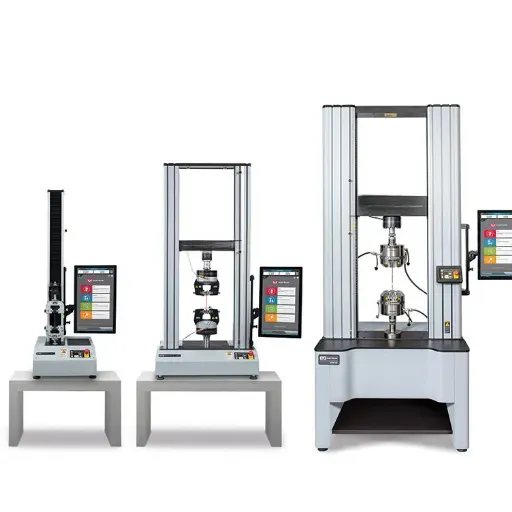
Thinking of Bending Stress and Modulus
Bending stress and flexural modulus are important tools in evaluating the mechanical properties of materials. Bending stress refers to the internal stresses wrought in the material when subjected to a bending load. It is, therefore, of primary importance to a material’s resistance to deformation or failure while in service under load. The flexural modulus is the measure of the stiffness of a material, indicating the degree of stiffness exhibited by the resistance of the material to flexing or bending under a force. Both of these factors are important to analyzing the practical service behavior of the material.
Bending stresses are thought to be those stresses that develop as a result of bending moments, mainly in thin or slender components such as simply supported beams, and are mathematically determined by the formula σ=My/I where the symbols used have their usual meanings. It becomes very important for a material to sustain load levels under which its stress does not exceed the elastic limit. The tendency toward elastic behavior is explained from slopes on the surface of stress-strain curves derived from appropriate flexural tests. Higher the modulus, more rigid is a material, and so the less is the tendency for excessive bending.
Interpreting and understanding these parameters give designers and engineers the choices to tailor materials for various applications. Materials with a higher flexural modulus are used for structural components that have to maintain their shape under load, while a material with lower bending stress limits would have to be reinforced in high-stress environments. Interpreting such results will enhance manufacturers’ ability to arrive at better designs, cut material waste, and ensure safety and reliability in their products.
Factors Affecting Flexural Strength Testing
Several factors can influence the testing accuracy or results for flexural strength. One major factor is the composition of the material as it can hold properties that intersect with resistance to bending. For example, fiber reinforcements or even fillers in a material could allow better resistance to flexural stress, thus giving test values on the higher side. Making proper interpretations of the test results depends primarily on understanding the material structure. Another important factor is the size and shape of the test specimen. Any variations in the test piece’s dimensions-thickness, width, etc.-result in considerable variation of results since these parameters affect how the material applies and sustains loads. The specimen preparation process should remain consistent for meaningful comparisons and reliable test results amongst multiple samples.
Other considerations include environmental conditions during testing. Test conditions such as temperature and humidity could affect how a sample would perform when subjected to a load. For example, elevated temperatures could render a particular plastic less rigid, thereby decreasing the flexural strength values obtained. Hence, tests should always be maintained under controlled environmental conditions for data validity and reproducibility.
Common Challenges and Troubleshooting
During flexural strength testing, inconsistent results become a common dilemma. This usually happens when sample preparations vary- for instance, there can be a departure from set dimensions or a variation in surface finish. To overcome this, ensure the preparation of all the samples follows the same procedures, tools, and standards, and they are all to be inspected before testing begins.
Another common issue is that the changing environmental conditions may affect test results. If tests are conducted in non-controlled conditions, such as changing temperature and humidity, results will likely be unreliable or inaccurate. To circumvent this, carry out the tests in a controlled environment where both temperature and humidity are maintained constantly, per relevant testing standards.
Further, machine malfunction or its improper setup might create test inaccuracies. For instance, calibrating improperly or misaligning the sample during testing can all affect the results. Imperatively, follow manufacturer instructions on calibration and confirm the instrument and sample placement before initiating tests to ensure accurate results. Tackling these challenges systematically paves the way of attaining more reliable and reproducible data upon flexural strength testing.
Advancements in Flexural Test Methods
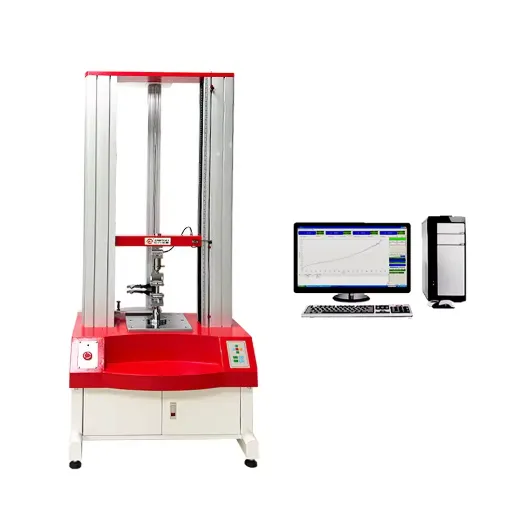
Innovations in Test Machines
Various recent developments in flexural test machines have further enhanced the accuracy, efficiency, and ease of operation. Contemporary machines come increasingly with automated features for measuring loading and displacement, making for the lesser interference of manual errors and hence greater reliability of the acquired data. These systems rely on high-precision sensors in order to achieve consistent and repeatable test results, which makes them adaptable to various ranges of materials.
Another innovation lies in bringing together a variety of testing capabilities under one machine. A great number of modern models now allow for multi-configurations tests such as three-point and four-point bending tests, which help users test various mechanical properties without the usage of additional testing equipment. This, therefore, increases the time efficiency and smoothens the flow of work in research and industries.
Another factor at play is the better ergonomics and user-centered approach. The software itself is very intuitive; set-up parameters are simple, real-time test monitoring is possible, and results can be analyzed in very comprehensive ways. Hence the testing procedures are becoming easier and give a much bigger heed to the rising quality and correctness standards determined by the industries.
Technological Developments in Flexural Testing
- Advancement in Materials and Sensors:
Modern flexural testing is highly benefited from the development of materials and highly precise sensors. To enable a tester to stand under repeated testing conditions and yet keep reliability of the measurement, test assemblies are built from the latest materials, such as carbon composites or nanomaterials. In addition to this, the new sensors with a very high degree of sensitivity and precision can detect the slightest change in deflection or strain and thus provide very precise data to be analyzed.
- Integration of Automation and Data Processing:
Automation and more efficient data processing systems have gained greater importance in the smooth working of flexural testing processes. Automatic loading systems provide consistent force application with minimal human error or variation. Further, advanced software measurement systems capture data, store it, and interpret it in rapid and precise ways for assessing the behavior of the materials. These developments offer time and resource efficiency to the testers, and the industries interested in materials evaluation.
- Real-Time Monitoring and Simulation Tool Adoptions:
The advent of real-time monitoring came as a boon because it improved the skill of testing under controlled stress, including immediate feedback during the tests. Together with simulation tools, users can now understand how materials could perform under different conditions without having to implement much physical testing, thus considerably reducing the wastage of materials. It aids in creating smarter materials that will be able to withstand challenges, through exhaustive pre-production testing and optimization.
Future Trends in Mechanical Testing
Automation and digitalization mark the very center of mechanical testing. Automated testing systems today are markers to efficiency and consistency improvement for faster outputs with minimum or no human intervention. Such testing systems make use of state-of-the-art sensors and computer software to assess data in real time, leading to very reliable and accurate results. In transformation of generating errors, these systems are saving time and resources in the industrial testing realm.
The increased integration of artificial intelligence (AI) and machine learning into the processes of mechanical testing represents another distinctly obvious trend. AI algorithms discern patterns and predict material performance under various conditions by sifting through huge amounts of data. The very capability develops and shortens material design cycles to create intelligent material designs that are more durable. Insights generated from AI allow manufacturers to potentially pinpoint failures during the design phase and thus implement better control over quality.
Lastly, mechanical testing is getting geared toward green concepts. Scientists and industries alike are therefore looking to develop eco-friendly methods of testing that use less energy and produce fewer wastes. For example, the practice in which simulation tools are used for virtual testing is replacing traditional physical testing, which is energy consuming. This promotes not only a green manufacturing process but also aligning with a global push towards a greener tomorrow to let mechanical testing be nurtured in an evolved manner.
Frequently Asked Questions (FAQ)
Q: What exactly does the flexural bending test mean?
A: The flexural bending test is a specimen of mechanical testing used to determine the specimen’s strength of flexing under conditions applied to a sample. This test measures how materials behave under bending loads, allowing vital observations on a material’s ability to resist bending and breaking when subjected to load.
Q: What are Types of Flexure Test?
A: Several flexure tests exist, such as the 3-point bend and 4-point bend tests. Each procedure has its own usage and is performed on a universal testing machine capable of adopting different configurations during the test in order to measure flexural strength and flexural modulus of a material.
Q: How is flexural strength defined?
A: Flexural strength is defined as the maximum flexural stress that a material is capable of undergoing when subjected to bending. Flexural strength is the value measured during the flexural bending test, and it represents the most important criterion when judging the yield strength and therefore the durability of materials subjected to bending load.
Q: What is the function of the bending box in the flexural bending test?
A: The bending fixture is one of the test chambers required in the flexural test. It is used for the support of the specimen while applying load so that the specimen under test is properly loaded and bending moment is correctly measured. Different types of bending fixtures (3-point and 4-point) allow varying test approaches.
Q: How to calculate flexural modulus?
A: The flexural modulus is calculated from the slope of the linear portion in the load-deflection curve obtained during the flexural bending test. This modulus characterizes the elastics of the material in bending and therefore creates some outlook on its stiffness and bending behavior under load.
Q: What materials can undergo testing by flexural bending?
A: Some materials that can undergo a flexural bending test include plastics, metals, and ceramics. The test is most valuable in the determination of flexural yield strength and bending stiffness of those materials used in the construction or manufacturing processes.
Q: What’s the essence of the yield point in the flexural bending test?
A: The yield point is the stress level at which a material begins to deform in a plastic manner. In a flexural test, determining the yield point is important since it represents the beginning of plastic deformation which could affect the application’s performance in real applications.
Q: Can brittle materials go through the flexural bending test?
A: A flexural bending test can be done on brittle materials. However, keep in mind these materials may display somewhat varied bending behavior, and very often, the modulus of elasticity in bending for brittle materials will be lower than that for ductile ones, implying they are less elastic prior to failure.
Q: How does variation in required test speed affect results in the flexural bending test?
A: The required test speed has a vast impact on the flexural bending test results. It has been observed that many materials may give diversified flexural strength and modulus at different test speeds. It is more important to maintain the test speed to allow comparison of test results of materials.
Q: What are the applications of flexural bending test?
A: Flexural bending tests are used in quality control, research and development, and material selection activities. These tests are used to assist engineers and scientists in understanding the bending behavior of materials, which becomes very important in designing materials for applications in construction, automotive, and aerospace industries where material performance under load is a critical factor.
References
- Comprehensive Guide to the Flexural Bending Test – This guide discusses standards like ASTM D790 and ISO 178, ensuring consistency and accuracy in flexural testing.
- All About Flexure/Bend Testing – A detailed resource explaining the mechanical testing method used to evaluate material behavior under bending forces.
- Test research on flexural strength of soil-cement reinforced materials – A research article exploring the impact of carbon fibers on the flexural strength of soil-cement.
- Bending deformation behavior and characterization – A study on four-point bending tests and the characterization of flexural stiffness.
- Four-point flexural test (Wikipedia) – A comprehensive overview of the four-point flexural test, including standards like ASTM C1161 and ASTM D6272.

